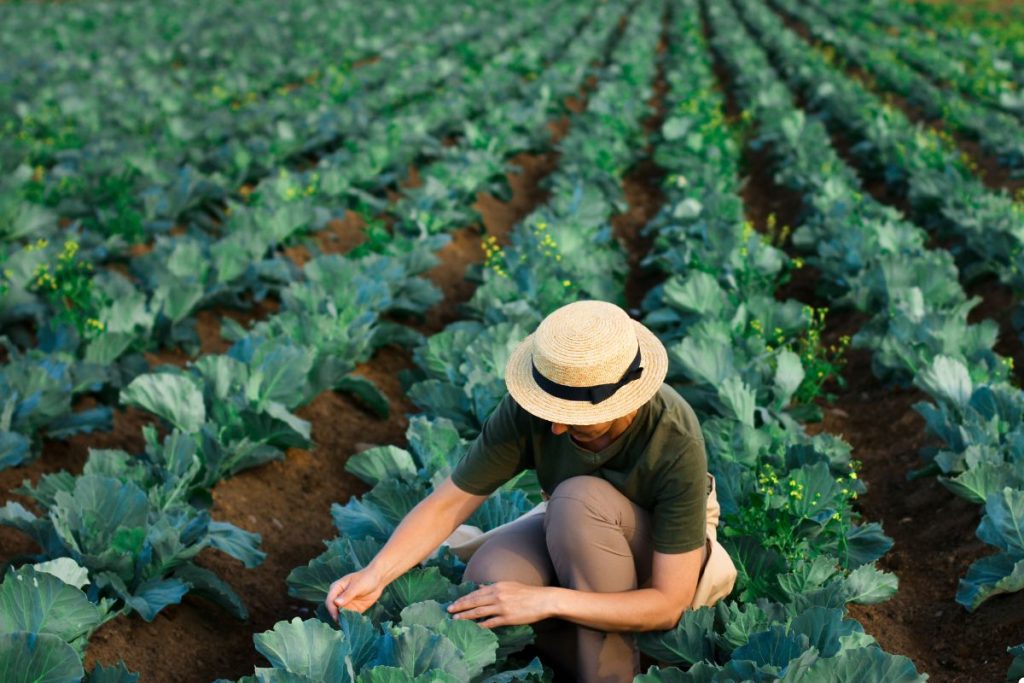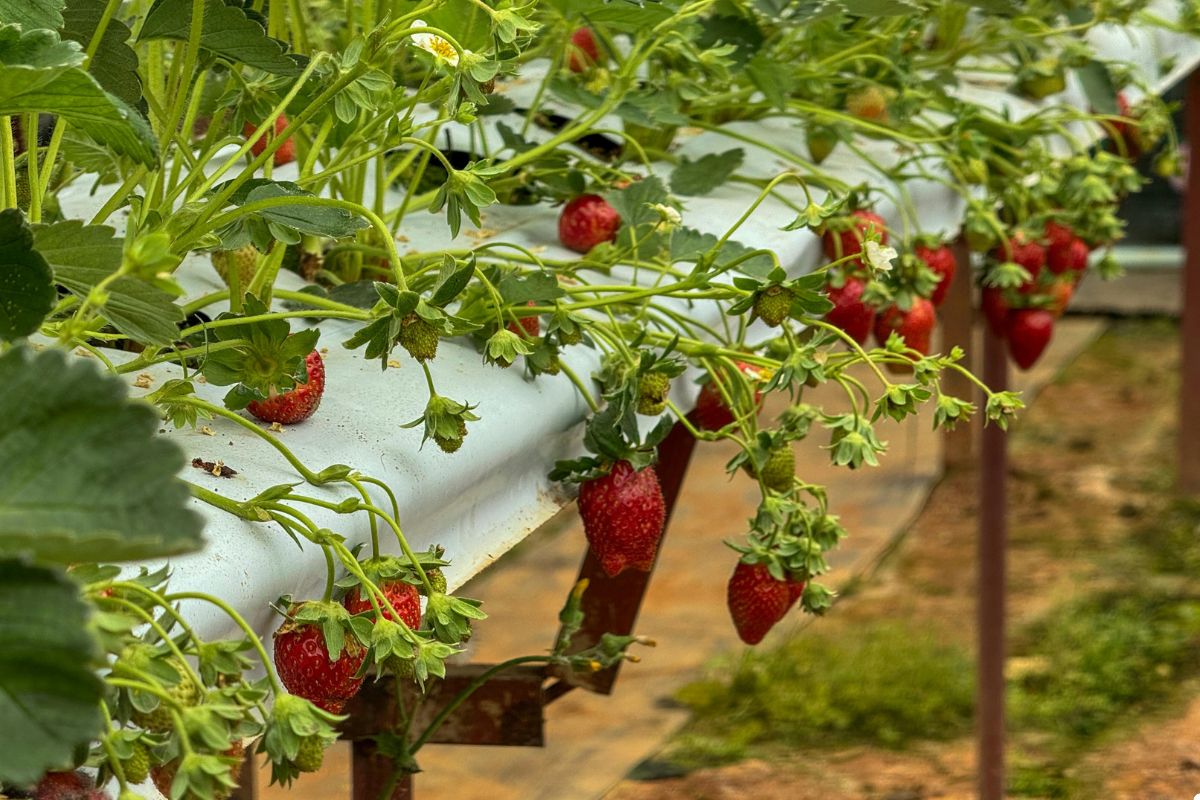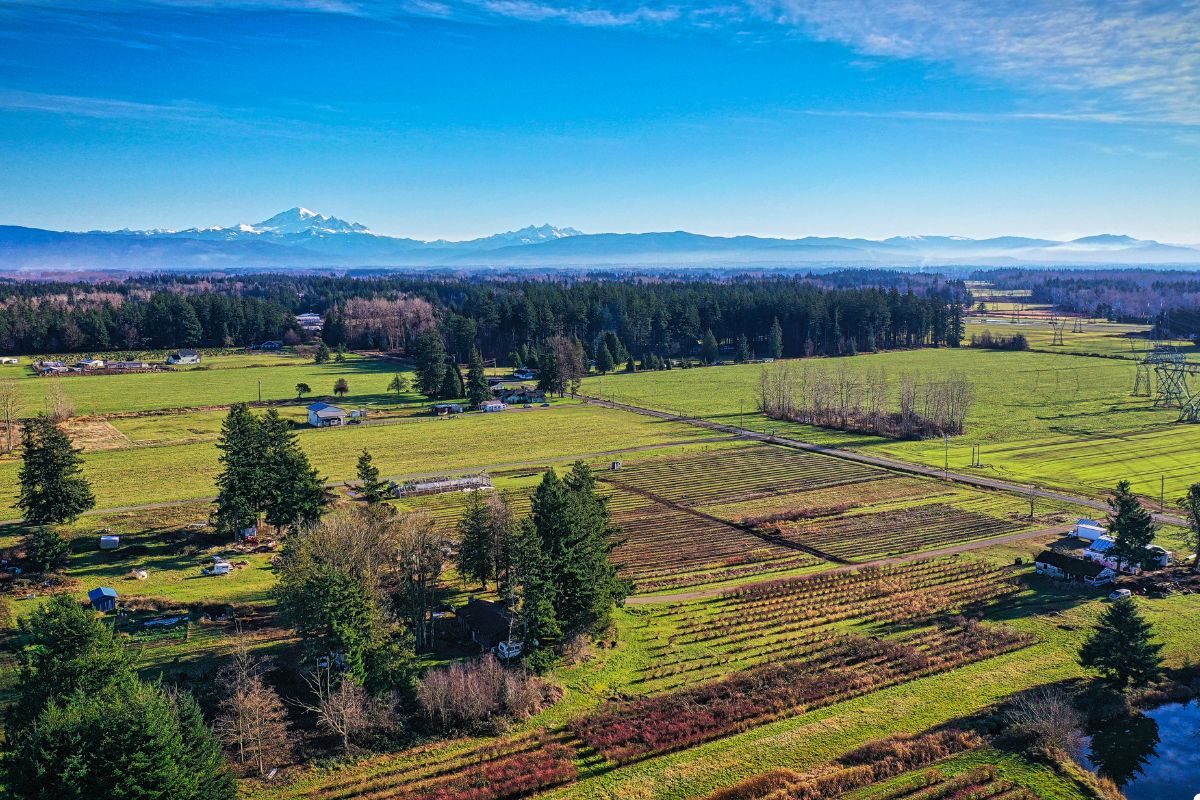
Want to enjoy fresh, delicious vegetables straight from your backyard even when the weather cools down? Absolutely! Vancouver, WA, offers a surprisingly long and productive cool-season vegetable growing season. From leafy greens and root vegetables to flavorful brassicas and alliums, you can cultivate a thriving garden. Keep reading to discover how to grow your own bounty of cool-season vegetables right here in Vancouver! Call us today to get expert tips and supplies for your garden!
Why Grow Cool-Season Vegetables in Vancouver, WA?
Vancouver’s mild winters and long springs provide an ideal environment for cool-season crops to flourish. Unlike warmer regions, you’re not limited to just summer harvests! Cool-season vegetables thrive in temperatures between 40°F and 70°F, which aligns perfectly with our local climate. Vancouver’s mild climate is great for gardening, but don’t forget about your grass—regular lawn treatment services keep it thriving alongside your crops. This means:
- Extended Growing Season: Enjoy harvests from early spring well into the fall, and even through mild winters.
- Unique Flavors: Cool weather often intensifies the sweetness and flavor of many vegetables like kale and carrots.
- Fresh, Local Produce: Reduce your reliance on store-bought vegetables and enjoy the satisfaction of growing your own nutritious food.

Preparing Your Vancouver Garden for Cool-Season Planting
Success starts with preparation. Give your cool-season vegetables the best possible start by taking these steps:
- Soil Testing: Understanding your soil’s pH and nutrient levels is crucial. You can purchase a soil testing kit at a local plant nursery or contact the Clark County Extension Office for information on professional testing services.
- Soil Amendment: Most Vancouver soils benefit from adding organic matter like compost. Work in plenty of well-rotted compost or aged manure to improve drainage, fertility, and soil structure.
- Sun Exposure: Most cool-season vegetables need at least 6 hours of sunlight per day. Choose a location that receives ample sunshine, especially during the shorter days of fall and winter.
- Drainage: Well-draining soil is essential to prevent root rot. If your soil is heavy clay, consider amending it with sand or building raised beds.
- Raised Beds: Raised beds warm up faster in the spring and provide excellent drainage, making them ideal for growing cool-season vegetables in Vancouver’s often wet climate.
Leafy Greens: Arugula, Spinach, Lettuce, Kale
Leafy greens are among the easiest and most rewarding cool-season crops to grow. They’re fast-growing and can tolerate light frost.
- Arugula: This peppery green adds a zesty kick to salads. Sow seeds directly in the garden in early spring or late summer.
- Spinach: Choose bolt-resistant varieties like ‘Winter Bloomsdale’ to extend your harvest. Plant in partial shade during warmer periods to prevent bolting (premature flowering).
- Lettuce: A wide variety of lettuces thrive in Vancouver’s climate. Consider planting a mix of loose-leaf and head varieties for a continuous harvest.
- Kale: A superfood powerhouse, kale is incredibly hardy and can withstand even hard frosts. ‘Dwarf Blue Curled’ and ‘Lacinato’ are excellent choices for the Pacific Northwest.
Root Vegetables: Carrots, Radishes, Beets, Turnips
Root vegetables are excellent choices for extending your harvest into the cooler months.
- Carrots: Choose shorter, rounder varieties like ‘Parisian’ or ‘Thumbelina’ if you have heavy soil. Plant in well-drained soil and thin seedlings to prevent overcrowding.
- Radishes: One of the fastest-growing vegetables, radishes can be harvested in as little as 3 weeks. Sow seeds every few weeks for a continuous supply.
- Beets: Plant in early spring or late summer for a fall harvest. Both the roots and the leaves are edible!
- Turnips: ‘Purple Top White Globe’ is a classic choice. Harvest when the roots are small and tender.
Brassicas: Broccoli, Cauliflower, Cabbage, Brussels Sprouts
Brassicas offer substantial harvests and are well-suited to Vancouver’s climate. Be vigilant about pest control, especially cabbage moths and worms.
- Broccoli: ‘Waltham 29’ and ‘De Cicco’ are reliable varieties. Start seeds indoors 6-8 weeks before the last frost.
- Cauliflower: Choose early-maturing varieties like ‘Snowball’ to ensure a successful harvest before the weather gets too cold.
- Cabbage: ‘Early Jersey Wakefield’ and ‘Golden Acre’ are good choices for smaller gardens.
- Brussels Sprouts: ‘Long Island Improved’ is a popular variety. They require a long growing season, so start seeds early indoors.
Alliums: Garlic, Onions, Leeks, Shallots
Alliums are easy to grow and add incredible flavor to your dishes.
- Garlic: Plant garlic cloves in the fall for a summer harvest. Choose varieties suited to our climate, such as ‘Oregon Silver’ or ‘Inchelium Red’.
- Onions: Start onion seeds indoors in early spring or purchase sets (small, immature onions) from a local nursery.
- Leeks: Plant leeks in early spring for a fall harvest. Hill the soil around the stems as they grow to blanch them and create a milder flavor.
- Shallots: Similar to garlic, shallots are planted in the fall for a summer harvest.
Peas and Fava Beans
Peas and Fava Beans are easy-to-grow and can provide fresh food to harvest, and peas and fava beans add nitrogen to the soil.
- Peas: Consider varieties like “Cascadia”, “Little marvel” that is excellent choice for Pacific Northwest that is known for sweet taste and can handle the local environment and also provide disease-resistant plants.
- Fava Beans ‘Aquadulce Claudia’ and ‘Sweet Lorane’ Fava Beans are a good source of green manure, these plants add nitrogen to the soil that can assist in boosting up healthy growth and development. They are suitable option for improving and maintaining health.
Timing is Everything: Vancouver’s Planting Calendar
- Early Spring (February-April): Start seeds indoors for broccoli, cauliflower, cabbage, and Brussels sprouts. Direct sow arugula, spinach, lettuce, radishes, and peas.
- Late Spring (May-June): Plant onion sets, leeks, and shallots. Transplant broccoli, cauliflower, cabbage, and Brussels sprouts seedlings.
- Late Summer (July-August): Direct sow arugula, spinach, lettuce, radishes, carrots, beets, and turnips for a fall harvest.
- Fall (September-October): Plant garlic cloves.

Watering & Feeding Your Cool-Season Crops
- Watering: Water deeply and regularly, especially during dry spells. Monitor soil moisture and avoid overwatering, which can lead to root rot.
- Feeding: Feed your plants with a balanced organic fertilizer every few weeks. Compost tea is an excellent natural fertilizer that provides essential nutrients.
Protecting Your Plants from Frost & Pests
- Frost Protection: Use row covers or frost blankets to protect your plants from unexpected freezes.
- Pest Control: Regularly inspect your plants for pests like aphids, cabbage worms, and slugs. Use organic pest control methods like insecticidal soap, neem oil, or diatomaceous earth.
Knowing When to Harvest for Peak Flavor
- Leafy Greens: Harvest leafy greens when the leaves are young and tender. Cut outer leaves or harvest the entire plant at once.
- Root Vegetables: Harvest root vegetables when they reach the desired size. Carrots and beets can be left in the ground for a short period, but radishes should be harvested promptly to prevent them from becoming tough.
- Brassicas: Harvest broccoli and cauliflower heads when they are firm and tight. Harvest cabbage when the heads are solid.
- Alliums: Harvest garlic and shallots when the tops start to fall over. Harvest onions when the tops turn yellow and fall over.
Enjoying Your Homegrown Bounty: Recipes and Resources
Congratulations! You’re on your way to enjoying a bountiful harvest of cool-season vegetables. Now it’s time to get creative in the kitchen!
- Local Nurseries: Visit local nurseries like “Bauman Farms” (example, add a real local nursery here and external link to website) for plant starts, seeds, and expert advice.
- Garden Clubs: Join the “Vancouver Gardener’s Club” (example, add a real local garden club here if applicable) to connect with fellow gardeners and share tips and tricks.
- Recipes: Search online for delicious cool-season vegetable recipes. From kale salads to roasted root vegetables, there are endless ways to enjoy your homegrown bounty. Discover tasty ways to enjoy your harvest with delicious cool-season vegetable recipes! Contact us today for expert tips and fresh inspiration for your garden-to-table meals!
Frequently Asked Questions About Cool-Season Vegetable Gardening in Vancouver, WA
What are the best cool-season vegetables for beginners in Vancouver, WA?
Arugula, radishes, lettuce, and spinach are excellent choices for beginners due to their fast growth and ease of care.
When is the best time to start seeds indoors for my Vancouver garden?
Start seeds indoors for broccoli, cauliflower, cabbage, and Brussels sprouts 6-8 weeks before the last frost (typically around mid-April).
How do I protect my cool-season crops from frost in Vancouver, WA?
Use row covers, frost blankets, or even old sheets to protect your plants from frost. You can also mulch around the base of plants to insulate the soil.
What is the best soil for cool-season vegetables in Vancouver, WA?
A well-drained, fertile soil rich in organic matter is ideal. Amend your soil with compost or aged manure before planting.
Remember to enjoy the process and don’t be afraid to experiment! Gardening is a rewarding journey, and with a little planning and effort, you can enjoy fresh, delicious vegetables from your Vancouver garden all season long. Call us today for expert advice and quality gardening supplies!
